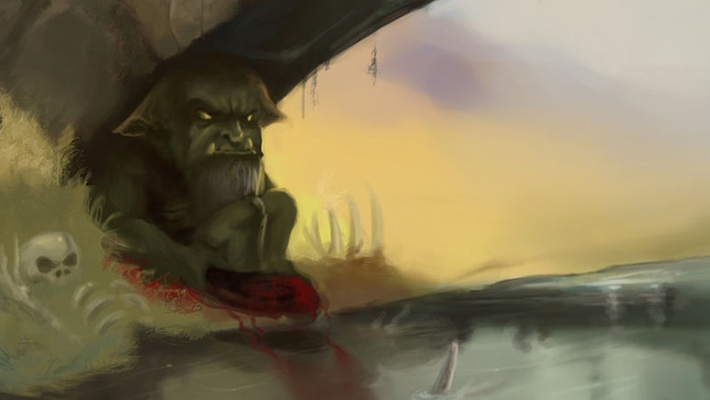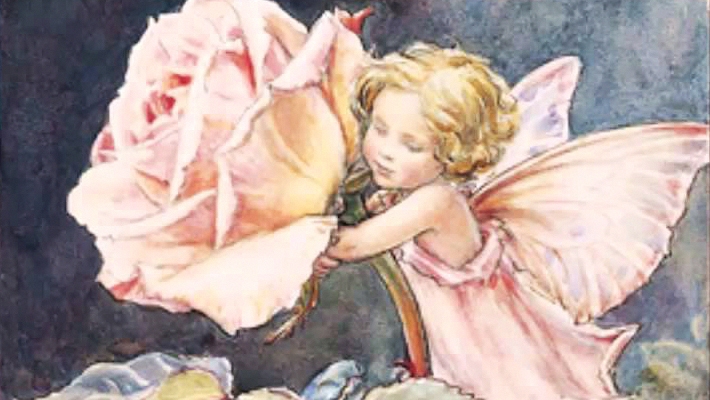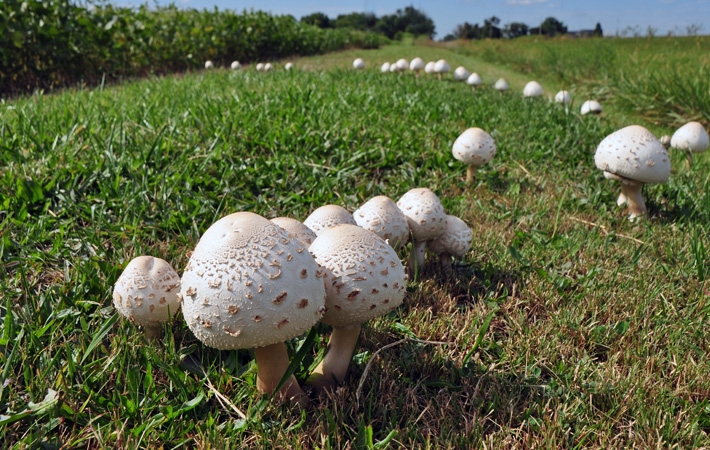Having followed the fairy fire in last week's post, it's time to come face-to-face with the creatures behind the Will-o'-the-wisp. Depictions of fairies in recent popular culture have been preoccupied with the plausibility or implausibility of their existence and the 1997 film 'Fairytale: A True Story' about the Cottingley fairies springs to mind. However, the focus of my blog is not to engage in the 'Do Fairies Exist?' debate but to speculate about the form fairies would have to take in order to exist in the world we know. Descriptions of fairies vary across cultures and over history, but they are generally thought to be human in appearance with special powers. There are some features, like diminutive size, wings and magical abilities, that have become iconic fairy features in popular culture, but they have not always been a part of the image of the fairy throughout history.
If fairies are depicted as being so similar in form to humans, it stands to reason that they must share a large portion of our DNA. Possibly evolution, as a result of some drastic and favourable genetic mutations, could be the explanation for a race so similar and yet so far from our own. Fairies in modern popular culture are often depicted as young, often winged, small humanoid creatures. However, this is mainly a result of the influence of Victorian fairy tales for children, in which fairies were made diminutive, benevolent creatures. Before then, fairies were either tall, radiant beings, often with divine or angelic qualities or short and ugly troll-like creatures. Tolkien's elves are a better example of the former depiction of fairies, and the latter are likely to appear more like this...

Troll under the bridge.
Credit: dantevirgil / DeviantArt
A common feature in depictions of modern fairies is their beautiful wings. They are in fact rare in folklore, but become common in the Victorian period and appear in later artwork. Before the Victorian tales, fairies flew instead with magic, and in depictions of fairies small enough to do so, sometimes on the backs on birds or on ragwort stems. The Victorian tales transform them into tiny, delicate creatures, less like humans and more like small birds or insects. Their wings look impossibly small for their body size, and usually incredibly translucent and delicate. It is difficult to believe that these can lift the creatures off the ground, let alone survive poor weather conditions, accidents or attacks from other animals. More recent depictions of fairies attempt to encapsulate more realism, increasing the size of the wings to improve 'wing-loading', which describes the mass of a creature as a function of its wing area. A fairy would need wings with a great enough wing area to accommodate their body size. This is a similar problem to the flight of dragons, which I have explored in more detail in 'Here Be Dragons'.
From descriptions of fairies in folklore and literature, they seem often to be quite intangible creatures, perhaps made of a different kind of matter from that around them. An early apparent eyewitness account of fairies is documented by Reverend Robert Kirk, minister of the Parish of Aberfoyle. He wrote in his 1691 manuscript, 'The Secret Commonwealth of Elves, Fauns and Fairies':
"Part way between man and Angel, 'light changeable bodies' (lyke those called Astral) somewhat of the nature of a condensed cloud, and best seen in twilight."
He also notes that they can appear and disappear at will. It seems they could be moving between here and the 'Otherworld', a realm in Celtic mythology that exists alongside the world that we know, though it is invisible to the human eye. This is believed to be the home of deities and powerful spirits and in Welsh folklore, an encounter with the Otherworld is preceded by a thundering sound.
The Otherworld can explain how fairies and elves go unnoticed, appearing and disappearing to humans whenever they choose. If we wanted to find a scientific explanation for this, it could be described as an additional dimension in space, or one of many multi-verses that are claimed to exist separate from our own. It is easier to see how this relates to fairy world if you consider dimensions as being facets of our perception of the universe. Speculatively, if fairies were living in a higher dimension, then their magical powers and their ability to flit between our world and their own could be explained in this way. One of the magical powers of fairies may be their ability to move between dimensions through 'folds' in reality. The thundering sound that precedes an encounter with the Otherworld could be the result of the meeting of the two dimensions.

The Rose Fairy.
Credit: Cicely Mary Barker
The Celtic nations describe a race of supernatural people driven into hiding by humans, called the Tuatha Dé Danann or the people of the Goddess Danu. The Aos Sí of Irish and Scottish mythology are believed to have settled either underground in fairy mounds called Sídhe, across the sea or in the Otherworld, coexisting alongside our own world. Similarly, Iceland has tales of a hidden people living in its volcanic hills. These creatures, Huldufólk, are human-sized and live in rocks. It seems not coincidental that fairy tales have isolated fairies and elves to underground, as it aids belief that they coexist with us while explaining how they can so easily go undetected.
If fairies adapted to live underground, it is doubtful they would have evolved to look like how we depict them. They would probably have features similar to animals who spend long periods of time in the dark. We could look to troglophilic animals for inspiration, as these are cave-dwelling animals that can also survive in other environments. They live in almost perpetual darkness, so they may be only partially sighted or they may have eyes with more rods suited to scoptic (low-light) vision. They would not need to produce skin pigments for camouflage or to protect them from the sun, so they would have very pale skin. They are also very unlikely to be winged, like many modern depictions of fairies, as flight would not be a benefit when living underground and may even prove a hindrance. H G Wells' 'The Time Machine' springs to mind, because even though folklore describes subterranean-dwelling fairies like his beautiful Eloi, the reality is likely to be more like his industrial, monstrous Morlocks.
A large number of the Icelandic population believe that it's possible that elves exist. Though there are some who say that the Icelandic people's belief in elves is exaggerated for the sake of tourism, polls seem to suggest that most Icelanders would prefer to remain agnostic than outrightly deny the existence of elves. They seem adamant that the elves should not be bothered, as when disturbed they destroy equipment and buildings. Roads have been diverted to run around elf rocks without disturbing them and multi-million pound construction projects have been put on halt until reconciliation with the elves is achieved. From these examples of construction problems, it seems the Icelandic Huldufólk are extremely territorial and do not tolerate disturbance of their community lightly. Fairies are fairly benevolent until they feel under threat, at which point they become hostile and territorial. If fairies exist, they are likely to be aware of their position as a marginal species and this may prompt such strong territorial reactions.

Fairy rings invade Ohio.
Credit: Dave Imbrogno
This trait is characteristic of other cultures' depictions of fairies, for example, in the formation of fairy rings. Fairy rings are commonly cited as the place where fairies dance at night, and are usually believed to be perilous places for humans. By stepping into a fairy ring, you are likely to come under the power of the fairy folk. Humans can find protection from fairy magic with cold iron, wearing clothing inside out, running water, bells, St John's Wort or other charms of rowan and herbs. A fairy ring has been found to be a naturally occurring ring of mushrooms, the result of an underground network of thread-like mycelia (fungus). The fungus underground also shows its presence by causing the withering of or changes of colour in the grass above, further causing it to appear as though hundreds of tiny feet had danced upon the grass the night before. Considering the common belief that fairies are capable of influencing nature, the scientific explanation does not dispel the magic of these remarkable phenomena. If anything, it enhances it.
One common story in the folklore of many cultures is that of a changeling, which is the offspring of a fairy, elf or other supernatural creature who has been left in the place of a human child. I think it is worth mentioning the possible reality behind the development of these myths, though changelings as a topic could be the subject of a wholly separate article. There are a number of diseases and genetic conditions whose symptoms have, in the past, caused parents to believe that their children have come from the fairy world. Primordial Dwarfism, Hunter Syndrome, Spina Bifida, Progeria, Prader-Willi Syndrome, Cerebral Palsy and Progeria are a few examples of the conditions that cause such, sometimes subtle, abnormalities. For example, Progeria is an extremely rare genetic condition which causes aspects of aging to become apparent at a very early age. People with the condition have small, frail bodies and large heads in comparison with their bodies. This is likely to give them an appearance not dissimilar to descriptions of fairies and elves from folklore. In the absence of relevant knowledge, parents of these children may seek explanations for their children's abnormalities, causing them to turn to the supernatural.
In Welsh fairy tales, the changeling at first resembles the human that it has replaced, though over time its behaviour reveals it to be a fairy impostor, as it grows ugly and ill-tempered. This could've been a likely explanation for children with Autism, who may exhibit inexplicable or difficult behaviour and find it difficult to empathise with others, giving them the sense that they do not belong. Changelings often exhibit unusual intelligence or cunning, as people with Asperger's syndrome (a form of autism) usually have higher than average intelligence. It is terrible to think of how ostracised suspected changeling-children must have felt growing up with the sense that they didn't belong in the world they were born into. Some of the 'remedies' were intensely cruel, including putting the baby out at night or holding it over a fire. Even up until the late 19th century, children died as a result of the torture they received at the hands of relatives and their local community. It is shocking how the strong belief in the supernatural drove people to committing such inhumane acts, while ignorant of the real reasons behind their children's condition.

Baby Changelings.
Credit: Lindsey Davies
The changeling tale is one example of the 'darker' side of fairies that is often forgotten among the depictions of delicate winged beings with sweet natures. This dichotomy has been noted in more modern depictions, combining the fairy's duality of character and appearance to sinister effect. Doctor Who spin-off series Torchwood introduces an alien race called the Fairies, members of which can shift between two forms: the delicate and sweet-natured winged creatures of Victorian fairy tales and a more monstrous human-sized form. This suggests that the good and beautiful fairy form is just a way of misleading humans, when the true fairies are more like the cruel and vindictive creatures of folklore. The Torchwood fairies single out human children that they believe to be 'Chosen Ones' and aim to protect them until later in life, when the children become fairies themselves. This seems to be similar to the changeling myth, as human children are stolen away by the fairies, to be replaced by something supernatural. In this form of the myth, it is the children themselves that undergo a transformation, rather than simply being replaced.
Duality is a common theme in fairy tales. Fairies can be either fair and benevolent or ugly and cruel-natured. They are calm and non-threatening, but turn hostile when provoked. They flit between two worlds, or between two levels of human perception. They use this duality to deceive, to mislead humans and to make them commit horrible acts. As the enchanting and inviting Will-o'-the-wisp may lead travellers astray or to an unpleasant fate, fairies themselves have a tendency to "seem fairer and feel fouler". ('Brownie' points to all those who recognise where this phrase is from!)
References & Further Reading
- Kirk, "The Secret Commonwealth of Elves, Fauns and Fairies" (1691).
- Barker, "Flower Fairies of the Garden", Blackie (1944).
- "Fairytale: A True Story", Paramount Pictures (1997).
- "Torchwood - Small Worlds", Series 1 Episode 5, BBC Wales (2006).
Listing image: Suzanne Van Pelt / DeviantArt
